You've seen the cars and trucks with their custom headlight assemblies –boring factory units replaced with all-chrome or all-black headlight units, full of bright halos and LED strips, lighting up the night. Looks sick, right? But why are the guys and gals with the newest set of wheels having all the fun? You're justifiably proud of your '60s (or '80s) old-skool ride, but have always assumed that custom headlights aren't a choice for you because of your round or rectangular lamps.
Think again. If you're running what we call "sealed-beam" headlamps, there are a lot of sealed-beam conversion options. These allow you to replace those one-piece units with lights that are equal to, if not better than, some of the custom composite jobs.
First, let's clarify what kinds of Original-Equipment (OE) lights we're talking about. Almost all U.S. spec cars through the mid-1970s used ROUND sealed-beam headlamps, either TWO 7" lamps, or FOUR 5 ¾" lamps. The 7" lamps are combination low/high beam, and cars with the 5 ¾" lamps are running 2 low beam, and 2 high beam.
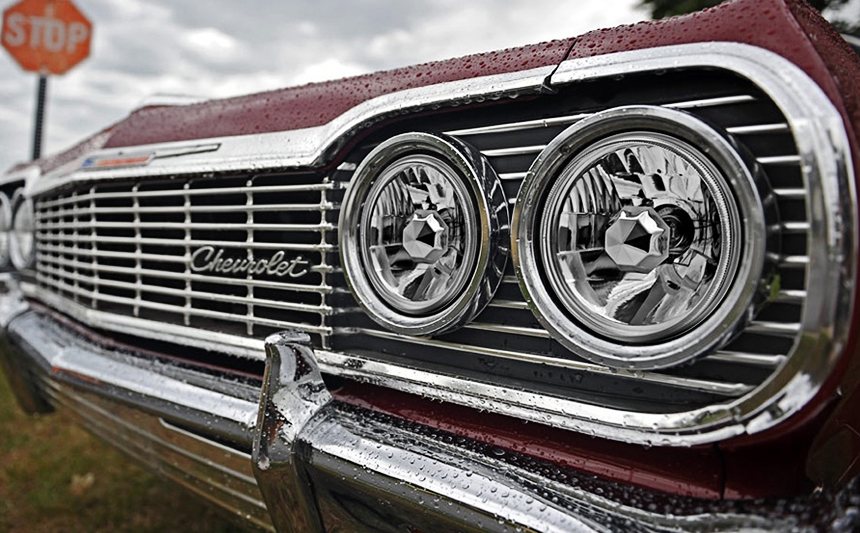
In the mid-70s, cars and trucks started using rectangular sealed beam lamps as an option. If you had TWO (combo low/high), technically they were 200 mm (millimeter); FOUR of them (again, 2 low beam and 2 high) were each 165mm. Some lighting manufacturers call the small ones 4"x6" and the larger ones 7"x6". If there's any doubt, check the number of electrical prongs in the back. Combo low/high beam lamps have THREE prongs. Separate low beam or high beam sealed beam lights have TWO prongs.
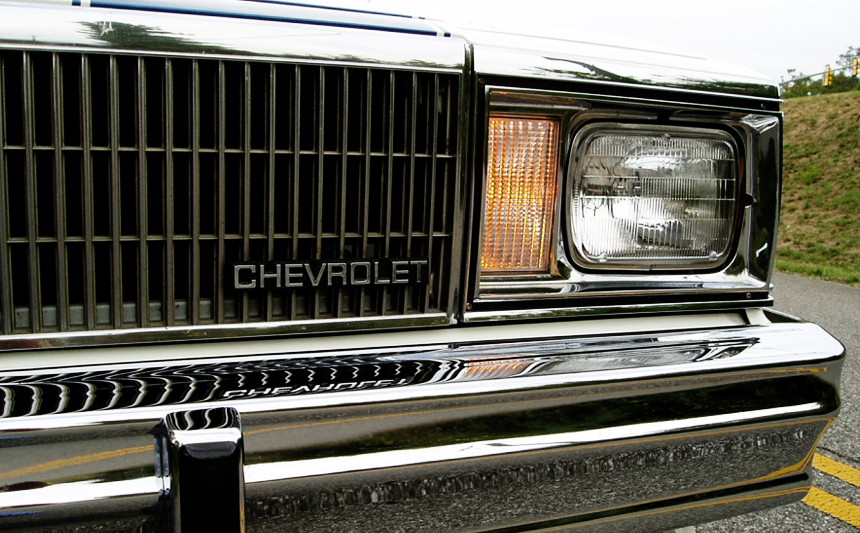
Now that you know what's currently installed, what might you do to liven things up? Let's start with the simplest choices first. Round and rectangular lamps are available, which include separate, replaceable bulbs. Combined with improved lenses and reflectors, these will dazzle you with their significantly improved light output. Unlike rather dim sealed beams, which require complete replacement when they burn out, these separate lens/bulb units only require you to reach in and replace the bulb – the lens stays in place.
You want more? Get lights with all-chrome or blacked-out housings, and use them as a styling statement, even when parked. Light assemblies in the same size and shape as your factory ones are available with halos or LED strips, just like you see on the newest BMWs and Audis. Of course, you also get fully functioning low and high beam lights.
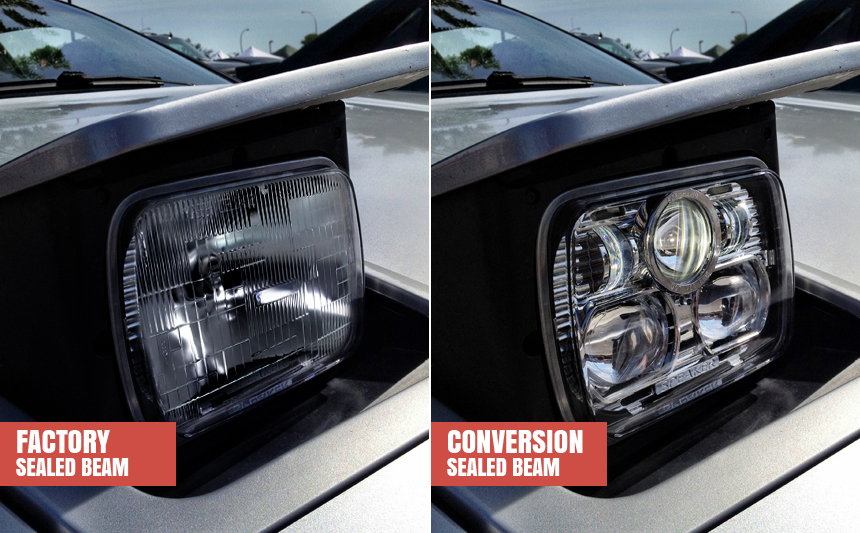
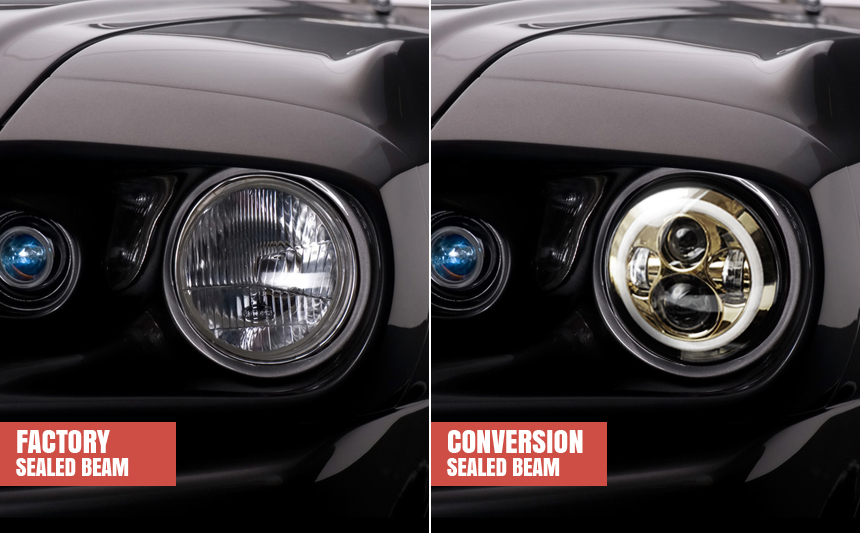
How about halos in amber, blue, red, or green? You can set it up so that the amber halo functions as a turn signal. (Keep in mind that in many parts of the U.S., blue, red, or green front lights are considered for show use only. It's a good practice with any of these lights to check your local ordinances for the appropriateness of on-road use.)
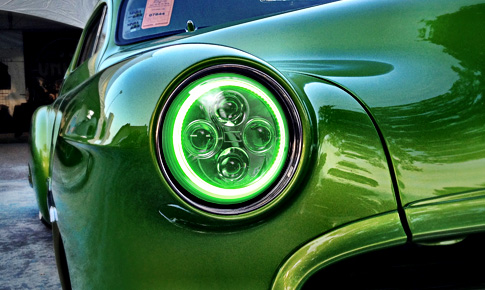
Possibly the "ultimate" is an LED conversion kit. These multi-faceted lamp assemblies have a truly unique look, with their low/high beam LED lights, and bright LED halo rings.
Whichever you choose, we may have saved the best news for last- these are really easy to install! Sealed beam bulbs by definition require little technical ability to replace. They were designed to be removed and replaced with just a few screws. The conversion kits are installed in exactly the same way. Compared to the composite lamps on newer vehicles, some of which require front fascia removal, you'll be done in a fraction of the time. Everything from a '55 Chevy to an '85 Mustang can showcase the vast improvement in its front lamps once a sealed beam conversion kit is installed.
Related Video:

Think again. If you're running what we call "sealed-beam" headlamps, there are a lot of sealed-beam conversion options. These allow you to replace those one-piece units with lights that are equal to, if not better than, some of the custom composite jobs.
First, let's clarify what kinds of Original-Equipment (OE) lights we're talking about. Almost all U.S. spec cars through the mid-1970s used ROUND sealed-beam headlamps, either TWO 7" lamps, or FOUR 5 ¾" lamps. The 7" lamps are combination low/high beam, and cars with the 5 ¾" lamps are running 2 low beam, and 2 high beam.

In the mid-70s, cars and trucks started using rectangular sealed beam lamps as an option. If you had TWO (combo low/high), technically they were 200 mm (millimeter); FOUR of them (again, 2 low beam and 2 high) were each 165mm. Some lighting manufacturers call the small ones 4"x6" and the larger ones 7"x6". If there's any doubt, check the number of electrical prongs in the back. Combo low/high beam lamps have THREE prongs. Separate low beam or high beam sealed beam lights have TWO prongs.

Now that you know what's currently installed, what might you do to liven things up? Let's start with the simplest choices first. Round and rectangular lamps are available, which include separate, replaceable bulbs. Combined with improved lenses and reflectors, these will dazzle you with their significantly improved light output. Unlike rather dim sealed beams, which require complete replacement when they burn out, these separate lens/bulb units only require you to reach in and replace the bulb – the lens stays in place.
You want more? Get lights with all-chrome or blacked-out housings, and use them as a styling statement, even when parked. Light assemblies in the same size and shape as your factory ones are available with halos or LED strips, just like you see on the newest BMWs and Audis. Of course, you also get fully functioning low and high beam lights.


How about halos in amber, blue, red, or green? You can set it up so that the amber halo functions as a turn signal. (Keep in mind that in many parts of the U.S., blue, red, or green front lights are considered for show use only. It's a good practice with any of these lights to check your local ordinances for the appropriateness of on-road use.)

Possibly the "ultimate" is an LED conversion kit. These multi-faceted lamp assemblies have a truly unique look, with their low/high beam LED lights, and bright LED halo rings.
Whichever you choose, we may have saved the best news for last- these are really easy to install! Sealed beam bulbs by definition require little technical ability to replace. They were designed to be removed and replaced with just a few screws. The conversion kits are installed in exactly the same way. Compared to the composite lamps on newer vehicles, some of which require front fascia removal, you'll be done in a fraction of the time. Everything from a '55 Chevy to an '85 Mustang can showcase the vast improvement in its front lamps once a sealed beam conversion kit is installed.
Related Video:

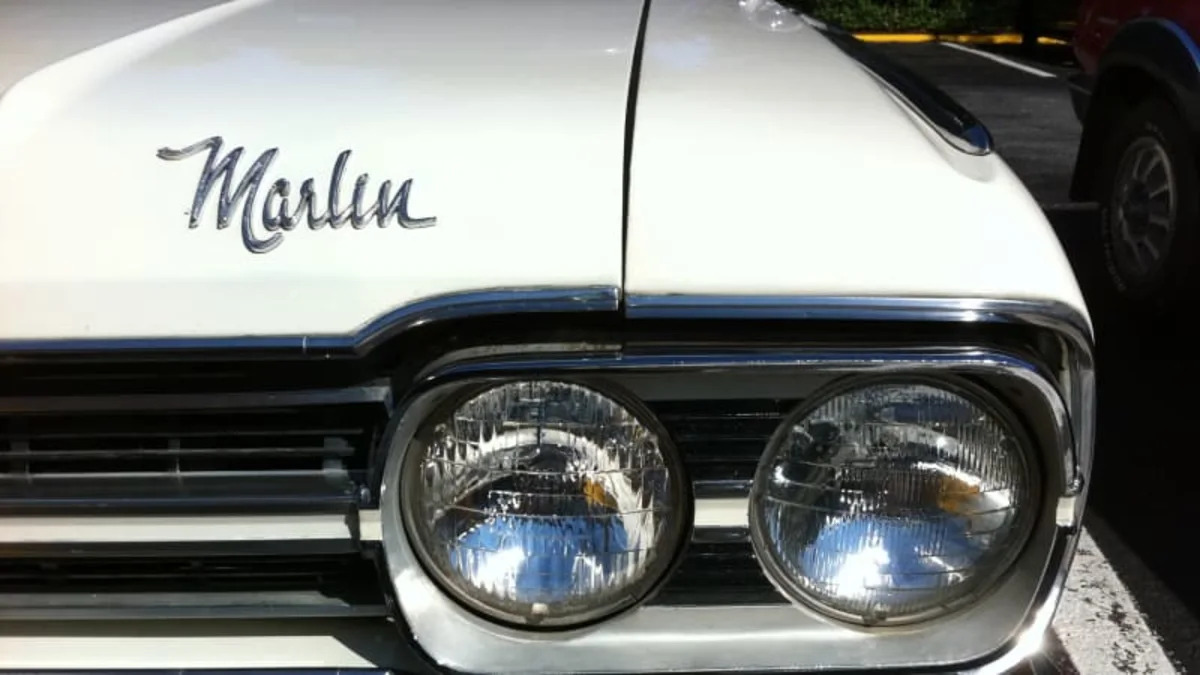

Sign in to post
Please sign in to leave a comment.
Continue